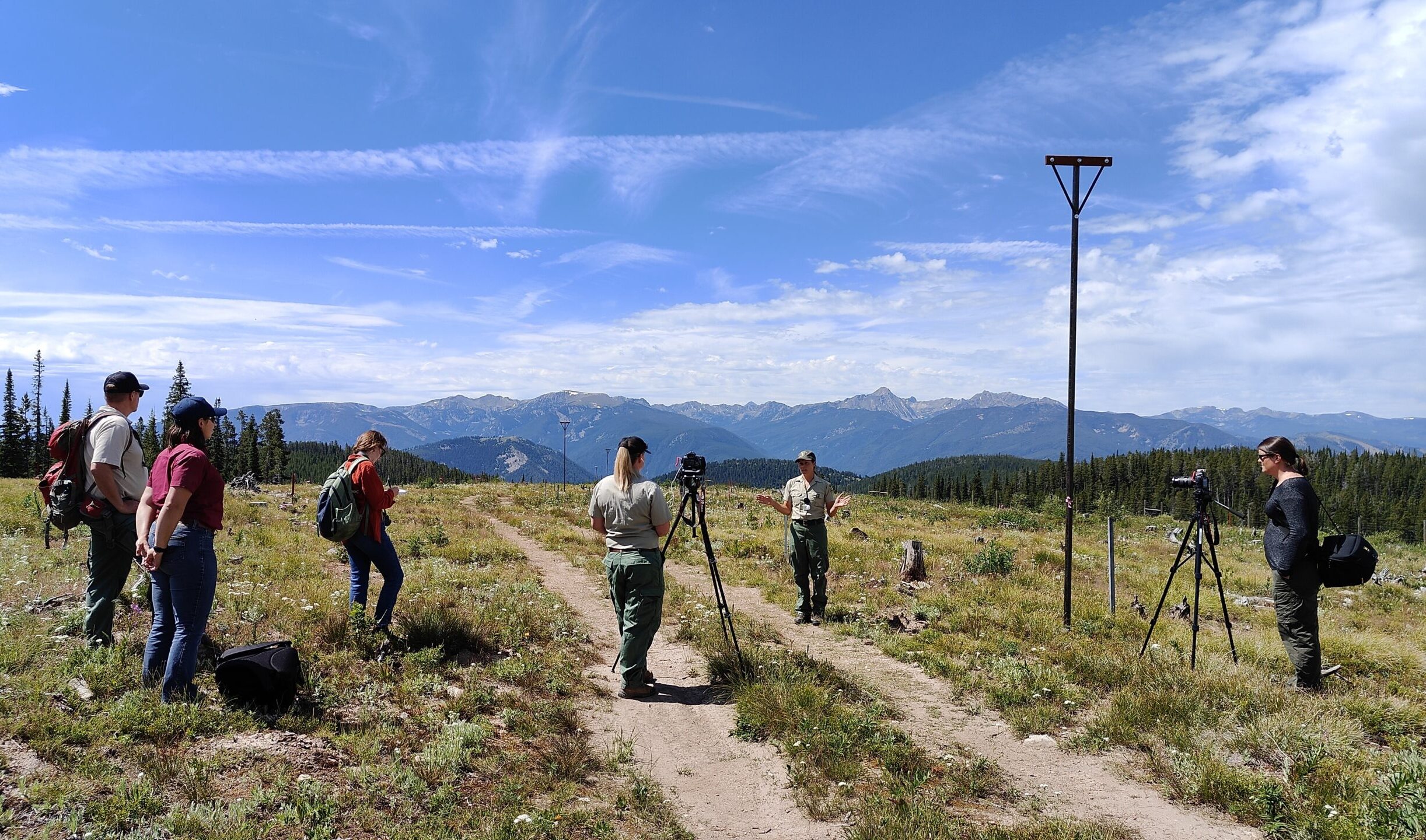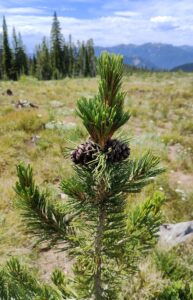
Restoration in Action: Little Bear Seed Orchard
The USFS Custer Gallatin recently gave a tour of the Little Bear seed orchard, situated just south of the Gallatin Gateway near Bozeman, MT. Whitebark pine experts were filmed to inform the public about the challenges whitebark pine faces and how the orchard plays a vital role in whitebark pine restoration by providing seeds from rust-resistant whitebark pine.

A 4-foot-tall whitebark pine, at just 12 years old, displaying cones with pride.
Encompassing a 7-acre fenced area, the Little Bear seed orchard consists of ~350 whitebark pine seedlings that were initially planted in 2013. These seedlings first underwent a two-year growth process at the Coeur d’Alene nursery in Idaho where they were grafted with whitebark pine from 30 different rust-resistant families across the Greater Yellowstone – Grand Teton region. This grafting process involved carefully attaching a dormant bud or small shoot (scion) from the selected rust-resistant whitebark pine onto a compatible rootstock, and then allowing the two plant parts to fuse and grow together as one. In addition to their high rust-resistance, these grafted seedlings have been tested for high drought tolerance and cold hardiness. Some of these seedlings have now started producing cones, with each cone containing around 50 seeds. Seeds from these rust-resistant whitebark pine will be used for planting, with priority given to areas that have been affected by wildfires or significant whitebark pine mortality. Additionally, a 2″ segment (scion) will be taken from chosen seedlings to enable future grafting as the orchard aims to increase its whitebark pine population to 480 seedlings within the next 5 years.
The Little Bear seed orchard is one of four seed orchards that are part of the Whitebark Pine Genetic Restoration Program, which began in 2000. The other orchards are Beaver Meadows in the Nez Perce – Clearwater National Forest, North Fork in the Lolo National Forest, and Adams Creek in the Lewis and Clark National Forest. This program aims to supply rust-resistant whitebark pine seeds to public lands for restoration purposes, including 20 National Forests, 3 National Parks, and the Bureau of Land Management.

